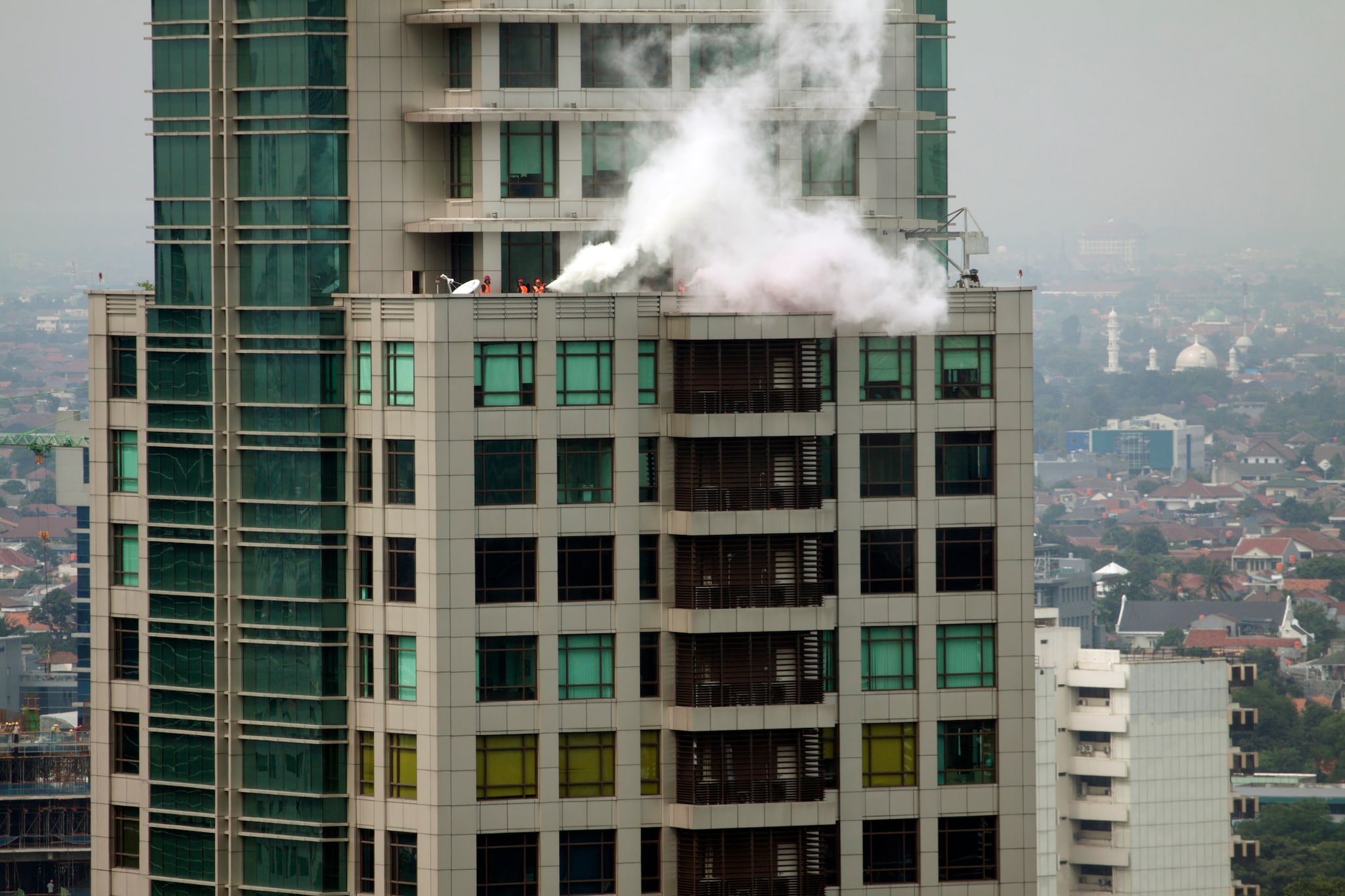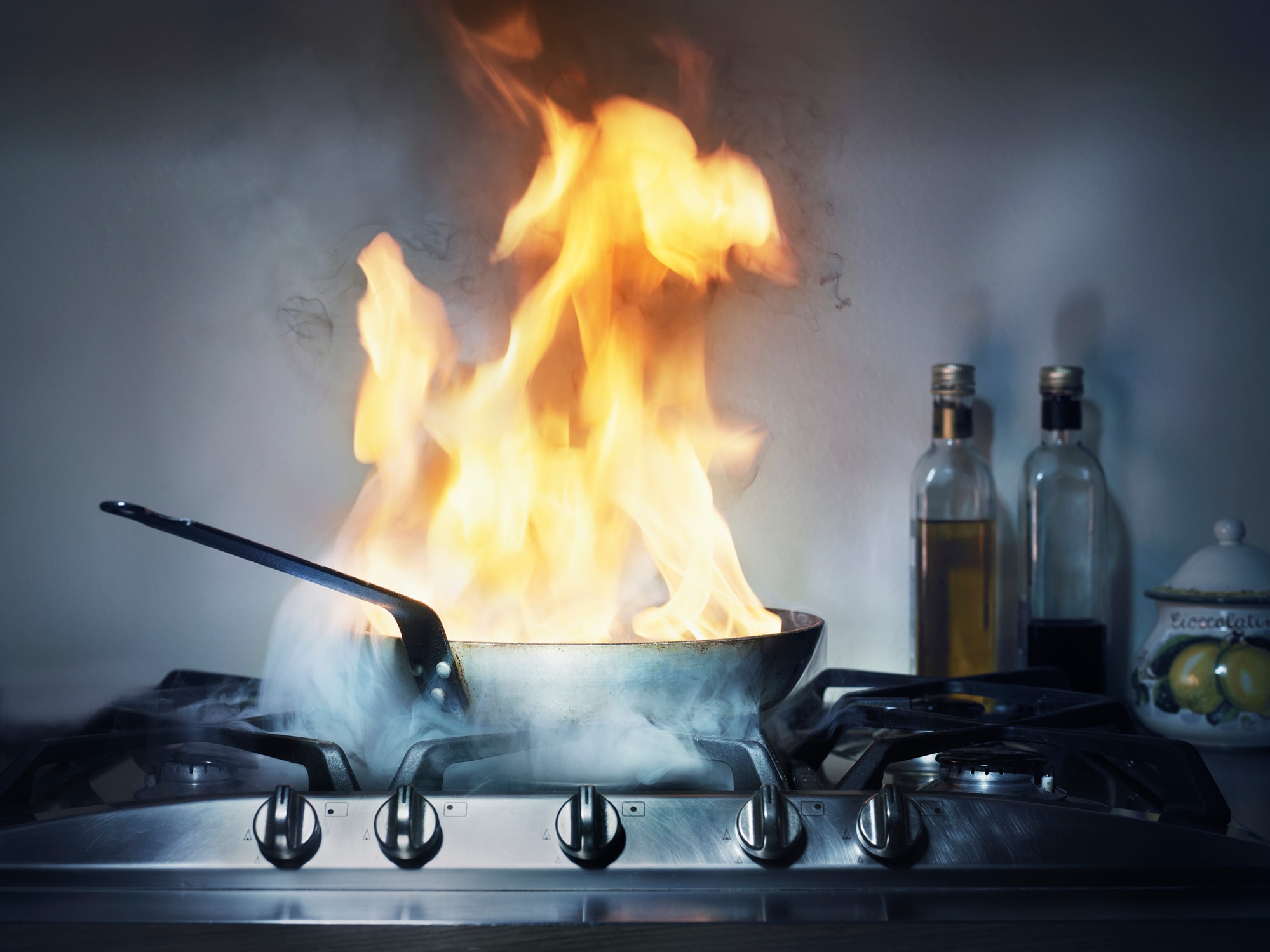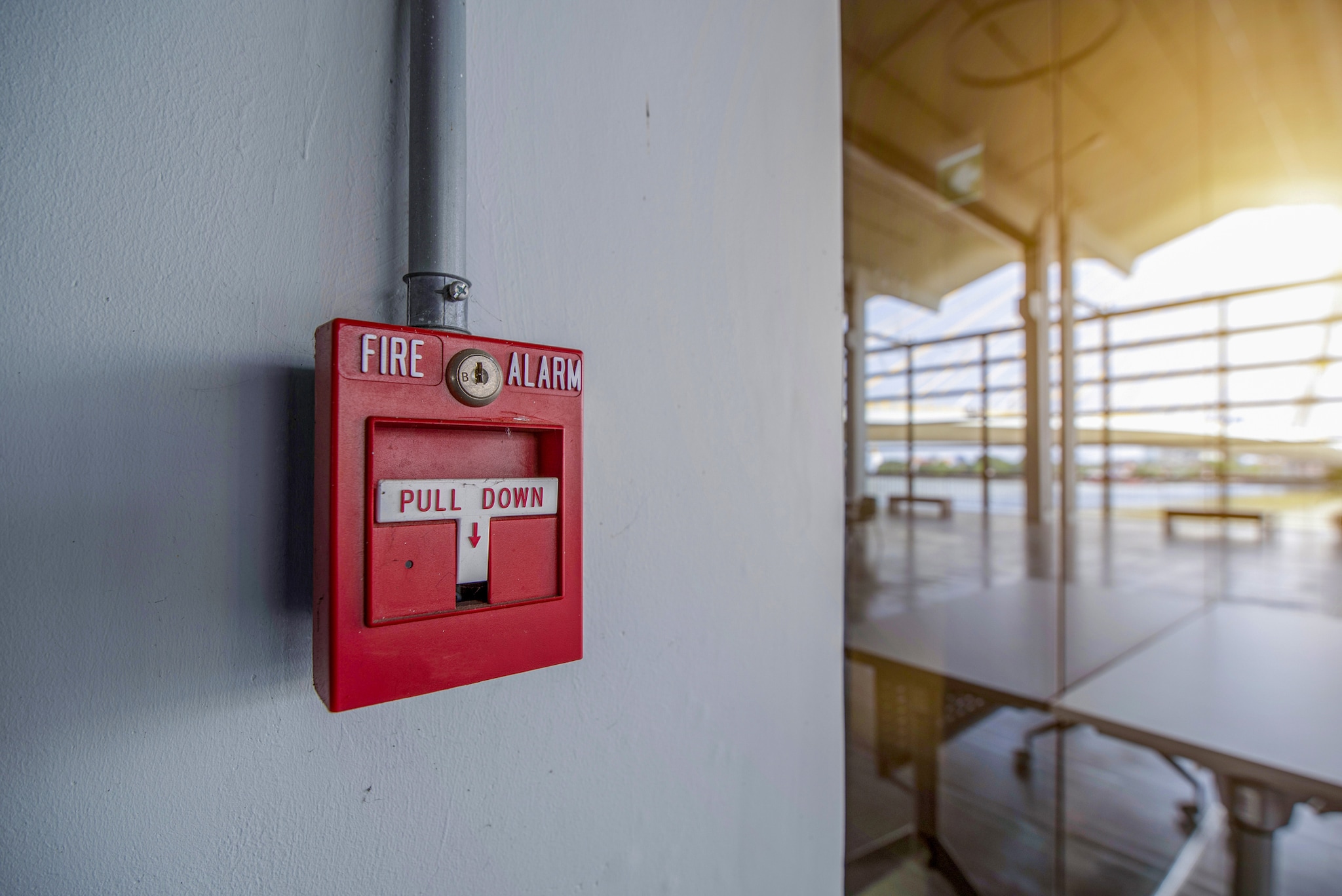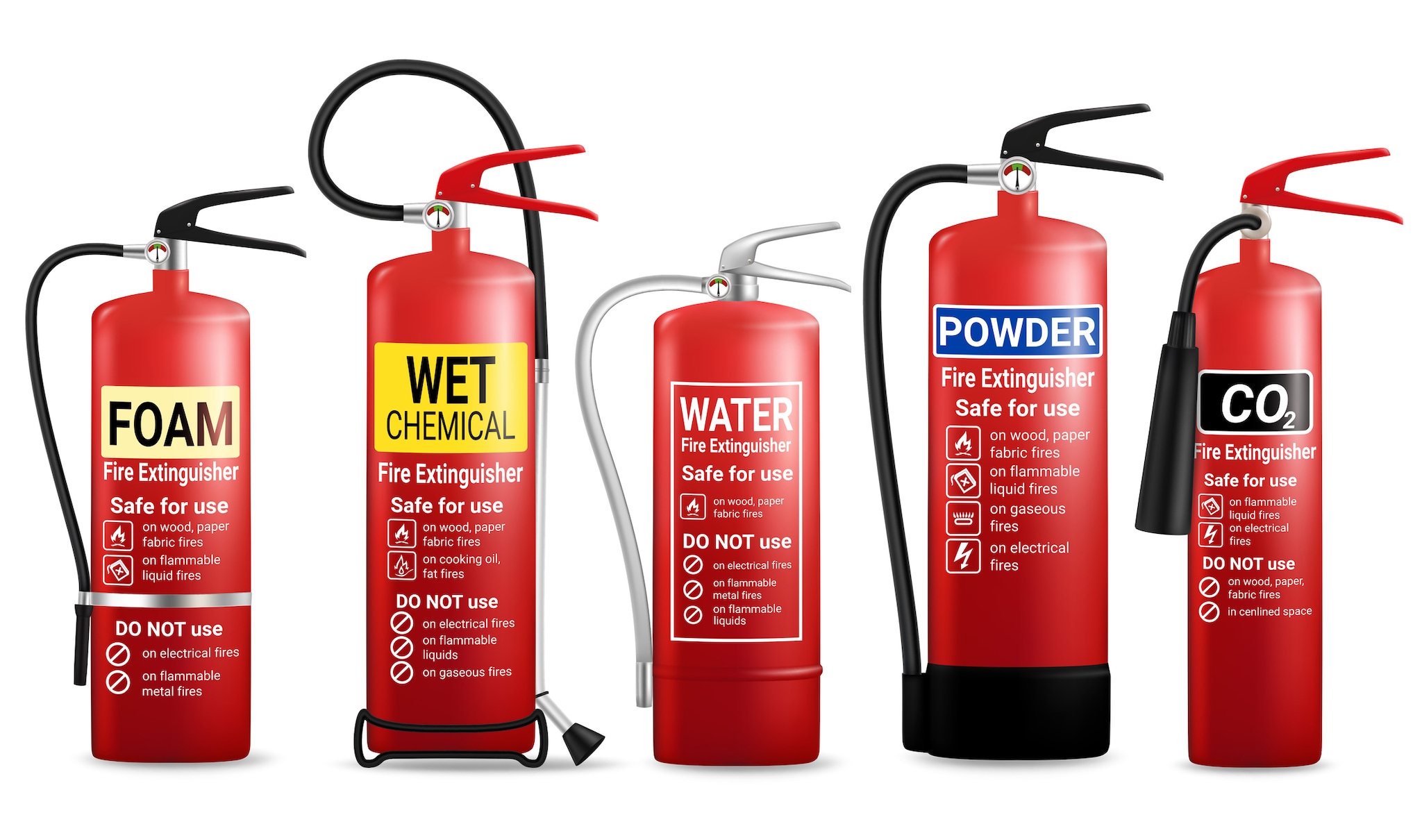Establishing and practicing fire evacuation procedures is essential to workplace safety.
Workplace fire drills can be tedious, but there’s a reason for the repetition: Frequently practicing fire drills can better prepare you and your staff for a real fire. Instead of panicking, everyone knows what to do and where to evacuate.
If a fire ever breaks out and you’ve practiced a drill a few times, employees should know what to do. Arming your employees with knowledge about fire alarms and fire extinguishers is also a good idea for a workplace fire protection plan.
We’ve created a comprehensive guide to showcase why fire drills at work are important and how you can properly implement them in your business.


Why are fire drills at work important?
Fire drills can help workers prepare for a fire. A regular fire drill is just one key element of a fire protection plan that includes other fire safety features, like using an extinguisher and ensuring your employees know to safely exit. Not only can practicing a fire drill save lives, but it can give your building a chance to test that the fire alarms are correctly working.
Warren “Chip” Knapp, an Interior Firefighter and EMT, agrees: “In a fire situation or any kind of crisis situation, it's chaotic. So you have to rely on that muscle memory of what you're going to do.”
- Fire drills can reduce the risk of injuries during a real fire.
- Drills can train employees to have a better handle on other emergency scenarios.
- Regular fire drills allow workers to practice different roles and responsibilities during an emergency.
- Fire procedures allow employees to get into a routine to respond quickly and calmly during an active fire.
- Regular fire drills test the response time and actions of staff so that you can create an actionable plan for future improvements.
- Regular drills can ensure that everyone knows where the emergency exits are located and are easily accessible.
- Prepares employees to consider different evacuation routes.
How to develop a fire evacuation plan at work
If your building already has a fire evacuation plan, now might be a good time to reevaluate and improve it.
If you’re trying to figure out what to include, we’ve compiled a few helpful suggestions on top of some of OSHA’s minimal requirements.
- Your plans and procedures should include information on how to report fires or other emergency scenarios.
- List what your employees should do in an emergency and where they should go. Include evacuation routes and specific employee assignments in this part of the plan.
- What are some ways you can account for workers after a fire drill?
- Catalog what procedures employees should follow if they stay behind to do critical tasks before evacuating.
- What procedures should emergency workers follow if they have to do any medical or rescue duties?
- The names and job descriptions of workers that your employees can contact if they want more information about fire safety plans.
We’ve taken OSHA’s requirements and filled them out with a bit more context in the following sections.
Develop and document fire drill procedures.
Your plan should report any necessary procedures, like instructions for turning off machinery or equipment.
- Do you have your emergency escape route clearly explained and documented?
- Will any employees remain on site during an initial alarm? For example, a worker might remain to shut off equipment that poses a fire hazard risk before evacuating.
- How and who will account for your employees after a fire drill? (This role often goes to a fire warden.)
- Will any employees be responsible for rescue or medical care? Who are these workers, and what medical duties will they have?
- How will your company report an active fire or other emergencies? Will they call 911, pull a manual fire alarm to alert emergency services, call building management to report a fire, or a combination of these procedures?
Determine a contact and communication plan.
Include the names and contact information of employees responsible for helping out during a fire emergency.
- Who and how will you communicate with your employees in an emergency?
- Which workers should someone contact for more information, or if they have questions about workplace fire procedures?
- Who should employees contact if they need help during a fire drill?
- Will employees use a communications program to mark themselves safe during an emergency?
Establish proper protocols for fire safety equipment, like fire alarms and extinguishers.
This protocol can help you determine what will happen if a fire or other emergency happens and how your employees should handle the situation with firefighting tools.
If workers are going to use fire extinguishers, they should know how to use these tools. The same goes for other devices, such as smoke detectors, sprinkler systems and manual fire alarms.
- Will you have an in-house firefighting brigade?
- Do employees know how to use a fire extinguisher?
- Does your current alarm system have different alarms depending on the scenario? For example, your building’s alarm system might have a different beep if there’s a fire, a severe weather warning or an active shooter.
- Does your office have a fire tool inspection plan with regular maintenance scheduled?
Nominate and teach emergency response team members how to assist during a fire.
Every workplace’s emergency management protocols are going to be different. You can choose to train staff on how to handle fire extinguishers and other active firefighting procedures or have an in-house firefighting team.
- Does your fire and life safety team know where all the exits are?
- Do they know where the fire alarms are located and how to use them?
- Does the fire safety team know how to use a fire extinguisher?
- Is your fire warden willing and able to assist anyone that needs help during an evacuation?
You should designate roles and responsibilities for the various team members assisting with the evacuation, including a fire warden, deputy life and fire safety warden and fire and life safety searchers.
A fire warden is often responsible for checking bathrooms, exercise rooms or other offices during an emergency.
The deputy fire and safety warden assumes all duties if the fire warden isn’t present. During typical fire procedures, they help the fire warden perform their duties.
The life safety searchers can check the bathrooms, lounges and conference rooms for any employees and assist the fire warden and deputy fire warden in other capacities.
Other key responsibilities of this team could include:
- Evacuate all employees or aid in that evacuation with senior staff members.
- Supervise the overall fire drill and account for all employees at the end of the exercise.
- Lead employees to safe zones outside the building.
- Use fire extinguishers to suppress small fires.
- Acquire basic first aid and CPR certifications or other medical duties.
- Know how to handle a chemical spill.
- Report an active fire or another emergency to the police or fire department.
Everyone on the emergency response team should at least know how to activate nearby fire alarms or other fire suppression systems, like sprinklers.
Practice fire drills annually.
Your workplace should have a fire drill every year. But practicing it more often—at least twice or even four times a year—is always a good idea. How often you practice a fire drill depends on your building’s fire risk and state and local laws.
When practicing a drill, imagine different scenarios that might happen during a real fire.
- What would your team do if a fire was blocking the stairwell?
- What should your employees do if a fire breaks out in the break room or kitchen?
- Where should employees go if they aren’t able to evacuate through the nearest fire exit safely?
What is a fire warden?
A manager commonly designates a fire warden to oversee workplace fire evacuation plans. The warden helps prepare other employees for a fire or different emergencies.
Fire wardens can have many duties before and during a fire drill.
- Assist anyone with special needs during an evacuation or implement protocols to ensure everyone safely evacuates.
- Direct employees to the proper exits and assembly meeting points.
- Improve emergency evacuation plans in critical areas where a workplace might struggle.
- Close all windows and doors as occupants leave.
- Account for all employees at the end of the fire drill.


How to conduct a fire drill at work?
So, you’ve created a fire safety plan and wonder what’s next?
Now it’s time to establish safe practices and practice a fire drill. Before practicing any fire drills, share your policies with new employees and ensure that any employee can view fire procedures whenever they want. Review the plans with your organization periodically so you can answer questions that might come up.
Make sure your employees know about any new emergency procedures before you have the fire drills.
Your fire safety evacuation plan should be readily accessible in your Employee Handbook or other online or physical copies.
The fire safety training should include:
- An emergency evacuation plan or map.
- An explanation of what each employee should do during an evacuation.
- A list of where all the emergency exits are located.
- Where and how workers should exit a building during emergency evacuation drills.
- Where everyone should meet outside of the building.
- What to do if a worker encounters a fire or smoke behind a door.
What to do if there is a fire in your building?
Planning and executing a fire drill allows you to practice everything you’ve taught your employees. Fire drills are also an opportunity to learn where weaknesses might be in your evacuation plan and enable improvements.
Here are a few steps you should take, whether there’s an active fire or you’re practicing a fire drill.
1. Make sure you activate the alarm if there is an active fire.
2. Alert other staff and employees that there is a fire.
3. Start evacuation drills using the nearest emergency exits.
4. A fire warden may have additional duties, like alerting the fire department about:
a. The fire’s location.
b. The severity of the fire.
c. If there are staff members that need additional help.
d. Which building exits the staff used.
e. If there are any impassable or unusable exits.
5. Everyone should evacuate to a pre-determined safety location outside.
6. The fire warden will account for all workers and guests.
7. You’ll need to wait for the building to be cleared.
8. Once everything is clear, the fire warden will notify the command station about any additional information, including anyone that needs assistance to return to the building.
Once you’ve completed the fire drill, there are a few things you can ask your team to help pinpoint areas for improvement:
- How successful were your team members at finding the meeting points?
- Did the fire warden check the office to ensure all employees were evacuated?
- Did the fire alarms go off when activated?
- Did all workers that needed additional assistance get help?
- Were all open windows and doors shut as employees exited the building?
- Did the response team and employees follow emergency procedures?
- Was it easy for occupants to follow posted exit strategies and evacuation routes?
How often should you do a fire drill?
How often a fire drill is required for your business depends on your local fire and building codes and whether you work with hazardous materials.
Most commercial properties have at least one fire drill a year, while others have a fire drill at least twice a year or every quarter. If your building works with flammable materials, you may need to do a fire drill every three months. Check with your local state and building codes if you’re in doubt.
How long should a fire drill take?
The length of a fire drill depends on several factors, including:
- The building’s size.
- The number of people that work in the building.
- How quickly everyone evacuates the building.
- The time it takes for the fire alarm system to reset.
Carnegie Mellon fire drills take 15 to 20 minutes. If your routine exceeds this timeframe, it’s probably a good idea to reevaluate your fire drill plan and determine how to reduce this time.
What should you not do during a fire drill?
It’s essential to follow proper procedures during a fire drill, so you can remain calm if a fire happens in your building.
You should never bring extra things or personal items, like blankets or your lunch, as you exit the building. And if your workplace has a kitchen, don’t forget to turn off any cooking appliances before heading to an exit.
Here are a few other tips:
- Do bring essential medications.
- Don’t use a personal grill on company property.
- Do only use stairs during an evacuation.
- Don’t prop doors open.
- Do keep the lights on when you exit.
- Don’t go back inside until you’re allowed to by the fire warden or fire department.
- Do check the doors for smoke or heat as you evacuate.
- Don’t lock any doors as you leave unless specifically requested to do so by senior staff.
- Always remain calm.
- Never run during a fire drill.
10 Resources for Fire Preparedness and Planning
- National Fire Academy courses, catalogs and schedules
- The Fire Marshal Interchange: A Free Resource for Information Sharing
- Risk Management Practices in the Fire Service
- OSHA Fact Sheet: Emergency Exit Routes
- Ready.gov: Emergency Response Resource Requirements
- NFPA: Life Safety Code
- Evacuation Plans and Procedures eTool
- Ready.gov: Safe Rooms and Shelters
- FEMA’s Higher Education Program
- FEMA’s National Incident Management Systems
Help protect your home with a smart fire alarm from ADT.
Early fire detection is critical to protecting you and your home. Early detection could mean the difference between catching fire early and not even knowing a fire has started until it’s too late.
Smart fire detectors are perfect for helping detect a fire early. And unlike typical fire alarms, a smart smoke detector can send a notification to your smartphone or the fire department—from virtually anywhere.
ADT’s monitoring centers can alert both you and the fire department at the first warning signs of a fire.
Frequently Asked Questions About Workplace Fire Drills
What is the most common class of fire?
A Class A fire is the most common fire in many businesses. Class A fires happen when an ordinary combustible catches fire. These include wood, cloth, plastic or paper.
What should I announce during a fire drill?
If you are a designated fire warden at your office building, you may be responsible for announcing instructions to the rest of the floor.
You can say something like, “This is an emergency. Proceed immediately to your nearest safety exit in an orderly fashion. Please leave your belongings and remain calm.”
What do you do if there is a fire drill at work?
If there’s a fire drill at your workplace, there are a few things you should do to ensure a successful fire drill.
1. Stay calm and quiet. Ensure you’re listening out for instructions from the fire warden or emergency response team.
2. Stop whatever you’re doing—eating, typing, re-heating lunch—and go to the nearest exit.
3. Avoid taking belongings with you, except for medications.
4. Check the doors on your way out for signs of fire or heat.
5. As you exit, close the door behind you to help contain the fire.
6. Don’t forget to leave the lights on to help any emergency personnel that may come into the building.
7. Always use the stairs.
8. Once out of the building, head for the designated meeting point.
9. Wait until the building is clear to go back inside.
How do you stay safe during a fire drill?
You should always take alarms seriously and treat every fire drill like a real fire.
- Familiarize yourself with the evacuation plan.
- Know your nearest escape routes.
- Remain calm and listen to the designated fire warden.
- Know where you’re supposed to go outside to meet other team members.
- Close any doors firmly behind you as you exit.
- Exercise caution when opening doors.
- Know where firefighting items are located.
Why didn’t the fire alarm go off when there was a fire in my building?
If you work in a high-rise office building, there’s a chance the fire alarm won’t go off if there is a fire on a different floor.
The floors most at-risk during a fire are the level where the fire originated and the floor above. An evacuation of the other floors may not happen until they are at risk. Listen carefully to an instruction as fire conditions improve or worsen[
Related Articles:


